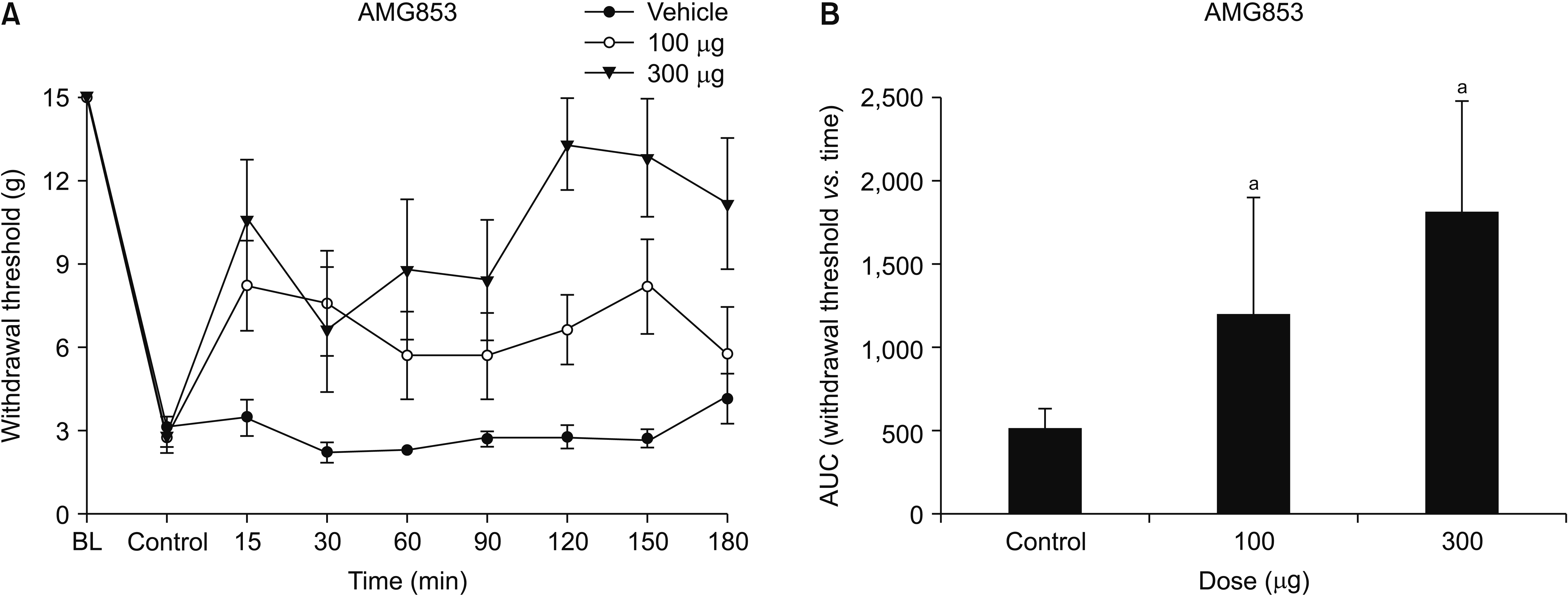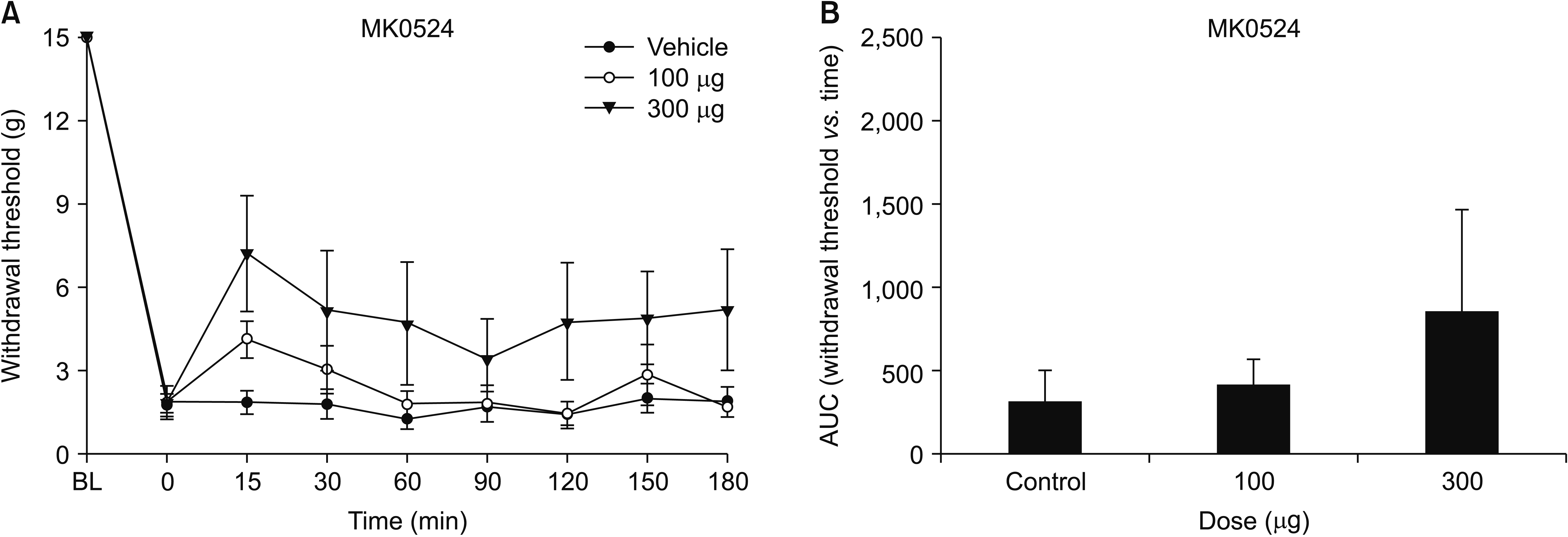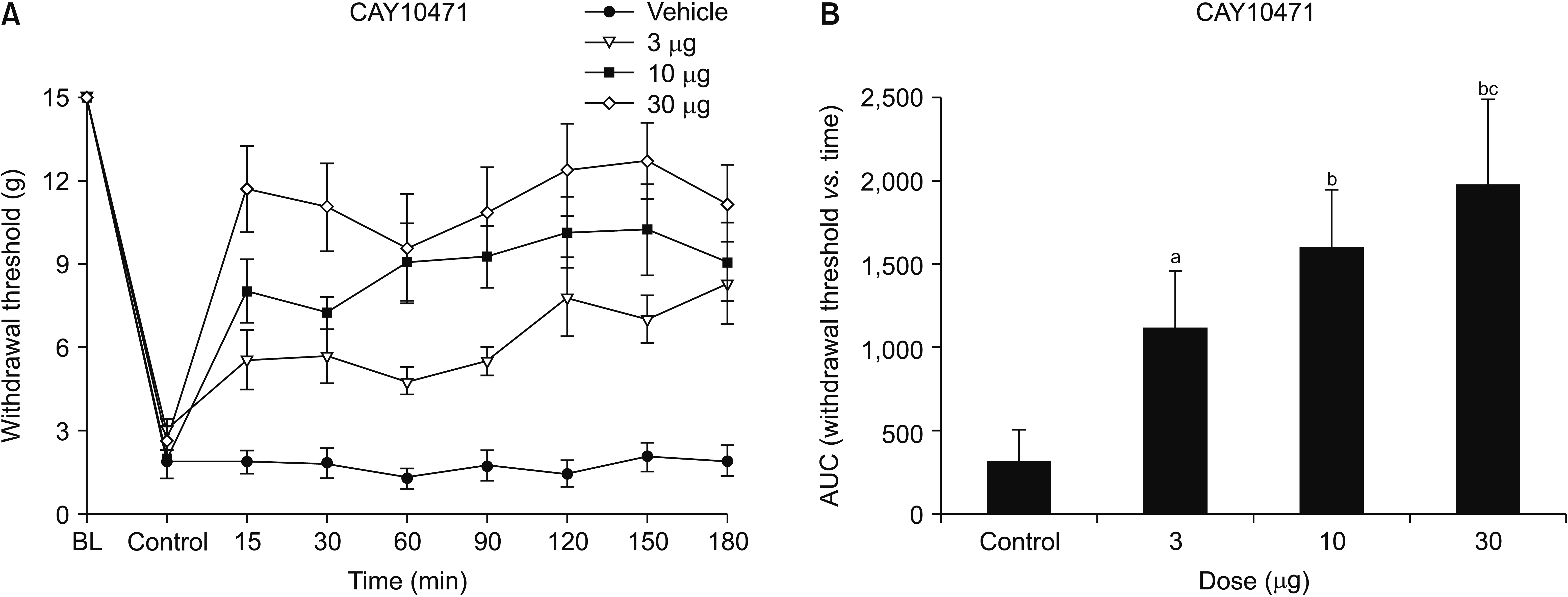2. Seretny M, Currie GL, Sena ES, Ramnarine S, Grant R, MacLeod MR, et al. 2014; Incidence, prevalence, and predictors of chemotherapy-induced peripheral neuropathy: a systematic review and meta-analysis. Pain. 155:2461–70. DOI:
10.1016/j.pain.2014.09.020. PMID:
25261162.

4. Zitvogel L, Apetoh L, Ghiringhelli F, Kroemer G. 2008; Immunological aspects of cancer chemotherapy. Nat Rev Immunol. 8:59–73. DOI:
10.1038/nri2216. PMID:
18097448.

5. Wang XM, Lehky TJ, Brell JM, Dorsey SG. 2012; Discovering cytokines as targets for chemotherapy-induced painful peripheral neuropathy. Cytokine. 59:3–9. DOI:
10.1016/j.cyto.2012.03.027. PMID:
22537849. PMCID:
PMC3512191.

6. Loprinzi CL, Maddocks-Christianson K, Wolf SL, Rao RD, Dyck PJ, Mantyh P, et al. 2007; The Paclitaxel acute pain syndrome: sensitization of nociceptors as the putative mechanism. Cancer J. 13:399–403. DOI:
10.1097/PPO.0b013e31815a999b. PMID:
18032978.

7. Janes K, Wahlman C, Little JW, Doyle T, Tosh DK, Jacobson KA, et al. 2015; Spinal neuroimmune activation is independent of T-cell infiltration and attenuated by A3 adenosine receptor agonists in a model of oxaliplatin-induced peripheral neuropathy. Brain Behav Immun. 44:91–9. DOI:
10.1016/j.bbi.2014.08.010. PMID:
25220279. PMCID:
PMC4275321.

8. Peters CM, Jimenez-Andrade JM, Jonas BM, Sevcik MA, Koewler NJ, Ghilardi JR, et al. 2007; Intravenous paclitaxel administration in the rat induces a peripheral sensory neuropathy characterized by macrophage infiltration and injury to sensory neurons and their supporting cells. Exp Neurol. 203:42–54. DOI:
10.1016/j.expneurol.2006.07.022. PMID:
17005179.

9. Liu CC, Lu N, Cui Y, Yang T, Zhao ZQ, Xin WJ, et al. 2010; Prevention of paclitaxel-induced allodynia by minocycline: effect on loss of peripheral nerve fibers and infiltration of macrophages in rats. Mol Pain. 6:76. DOI:
10.1186/1744-8069-6-76. PMID:
21050491. PMCID:
PMC2991291.

10. Narumiya S, Ogorochi T, Nakao K, Hayaishi O. 1982; Prostaglandin D2 in rat brain, spinal cord and pituitary: basal level and regional distribution. Life Sci. 31:2093–103. DOI:
10.1016/0024-3205(82)90101-1. PMID:
6960222.

11. Ogorochi T, Narumiya S, Mizuno N, Yamashita K, Miyazaki H, Hayaishi O. 1984; Regional distribution of prostaglandins D2, E2, and F2 alpha and related enzymes in postmortem human brain. J Neurochem. 43:71–82. DOI:
10.1111/j.1471-4159.1984.tb06680.x. PMID:
6427411.

13. Jang Y, Kim M, Hwang SW. 2020; Molecular mechanisms underlying the actions of arachidonic acid-derived prostaglandins on peripheral nociception. J Neuroinflammation. 17:30. DOI:
10.1186/s12974-020-1703-1. PMID:
31969159. PMCID:
PMC6975075.

14. Vanegas H, Schaible HG. 2001; Prostaglandins and cyclooxygenases [correction of cycloxygenases] in the spinal cord. Prog Neurobiol. 64:327–63. DOI:
10.1016/S0301-0082(00)00063-0. PMID:
11275357.
15. Grill M, Peskar BA, Schuligoi R, Amann R. 2006; Systemic inflammation induces COX-2 mediated prostaglandin D2 biosynthesis in mice spinal cord. Neuropharmacology. 50:165–73. DOI:
10.1016/j.neuropharm.2005.08.005. PMID:
16182321.

16. Kanda H, Kobayashi K, Yamanaka H, Noguchi K. 2013; COX-1-dependent prostaglandin D2 in microglia contributes to neuropathic pain via DP2 receptor in spinal neurons. Glia. 61:943–56. DOI:
10.1002/glia.22487. PMID:
23505121.

17. Koh GH, Song H, Kim SH, Yoon MH, Lim KJ, Oh SH, et al. 2019; Effect of sec-O-glucosylhamaudol on mechanical allodynia in a rat model of postoperative pain. Korean J Pain. 32:87–96. DOI:
10.3344/kjp.2019.32.2.87. PMID:
31091507. PMCID:
PMC6549587.

19. Chaplan SR, Bach FW, Pogrel JW, Chung JM, Yaksh TL. 1994; Quantitative assessment of tactile allodynia in the rat paw. J Neurosci Methods. 53:55–63. DOI:
10.1016/0165-0270(94)90144-9. PMID:
7990513.

20. Ujihara M, Urade Y, Eguchi N, Hayashi H, Ikai K, Hayaishi O. 1988; Prostaglandin D2 formation and characterization of its synthetases in various tissues of adult rats. Arch Biochem Biophys. 260:521–31. DOI:
10.1016/0003-9861(88)90477-8. PMID:
3124755.

21. Matsuoka T, Hirata M, Tanaka H, Takahashi Y, Murata T, Kabashima K, et al. 2000; Prostaglandin D2 as a mediator of allergic asthma. Science. 287:2013–7. DOI:
10.1126/science.287.5460.2013. PMID:
10720327.
22. Santus P, Radovanovic D. 2016; Prostaglandin D2 receptor antagonists in early development as potential therapeutic options for asthma. Expert Opin Investig Drugs. 25:1083–92. DOI:
10.1080/13543784.2016.1212838. PMID:
27409410.

23. Saunders R, Kaul H, Berair R, Gonem S, Singapuri A, Sutcliffe AJ, et al. 2019; DP2 antagonism reduces airway smooth muscle mass in asthma by decreasing eosinophilia and myofibroblast recruitment. Sci Transl Med. 11:eaao6451. DOI:
10.1126/scitranslmed.aao6451. PMID:
30760581.

24. Gonem S, Berair R, Singapuri A, Hartley R, Laurencin MFM, Bacher G, et al. 2016; Fevipiprant, a prostaglandin D2 receptor 2 antagonist, in patients with persistent eosinophilic asthma: a single-centre, randomised, double-blind, parallel-group, placebo-controlled trial. Lancet Respir Med. 4:699–707. DOI:
10.1016/S2213-2600(16)30179-5. PMID:
27503237.

25. Hirata M, Kakizuka A, Aizawa M, Ushikubi F, Narumiya S. 1994; Molecular characterization of a mouse prostaglandin D receptor and functional expression of the cloned gene. Proc Natl Acad Sci U S A. 91:11192–6. DOI:
10.1073/pnas.91.23.11192. PMID:
7972033. PMCID:
PMC45193.

26. Minami T, Uda R, Horiguchi S, Ito S, Hyodo M, Hayaishi O. 1994; Allodynia evoked by intrathecal administration of prostaglandin E2 to conscious mice. Pain. 57:217–23. DOI:
10.1016/0304-3959(94)90226-7. PMID:
7916452.

27. Willingale HL, Gardiner NJ, McLymont N, Giblett S, Grubb BD. 1997; Prostanoids synthesized by cyclo-oxygenase isoforms in rat spinal cord and their contribution to the development of neuronal hyperexcitability. Br J Pharmacol. 122:1593–604. DOI:
10.1038/sj.bjp.0701548. PMID:
9422803. PMCID:
PMC1565107.

28. Schuligoi R, Ulcar R, Peskar BA, Amann R. 2003; Effect of endotoxin treatment on the expression of cyclooxygenase-2 and prostaglandin synthases in spinal cord, dorsal root ganglia, and skin of rats. Neuroscience. 116:1043–52. DOI:
10.1016/S0306-4522(02)00783-2. PMID:
12617945.

29. Yoon SY, Robinson CR, Zhang H, Dougherty PM. 2013; Spinal astrocyte gap junctions contribute to oxaliplatin-induced mechanical hypersensitivity. J Pain. 14:205–14. DOI:
10.1016/j.jpain.2012.11.002. PMID:
23374942. PMCID:
PMC3564051.

30. Di Cesare Mannelli L, Pacini A, Bonaccini L, Zanardelli M, Mello T, Ghelardini C. 2013; Morphologic features and glial activation in rat oxaliplatin-dependent neuropathic pain. J Pain. 14:1585–600. DOI:
10.1016/j.jpain.2013.08.002. PMID:
24135431.

31. Watkins LR, Milligan ED, Maier SF. 2003; Glial proinflammatory cytokines mediate exaggerated pain states: implications for clinical pain. Adv Exp Med Biol. 521:1–21. PMID:
12617561.
32. Grill M, Heinemann A, Hoefler G, Peskar BA, Schuligoi R. 2008; Effect of endotoxin treatment on the expression and localization of spinal cyclooxygenase, prostaglandin synthases, and PGD2 receptors. J Neurochem. 104:1345–57. DOI:
10.1111/j.1471-4159.2007.05078.x. PMID:
18028337.

33. Lynch JJ 3rd, Wade CL, Zhong CM, Mikusa JP, Honore P. 2004; Attenuation of mechanical allodynia by clinically utilized drugs in a rat chemotherapy-induced neuropathic pain model. Pain. 110:56–63. DOI:
10.1016/j.pain.2004.03.010. PMID:
15275752.

34. Bujalska M, Gumułka SW. 2008; Effect of cyclooxygenase and nitric oxide synthase inhibitors on vincristine induced hyperalgesia in rats. Pharmacol Rep. 60:735–41. PMID:
19066421.








 PDF
PDF Citation
Citation Print
Print



 XML Download
XML Download